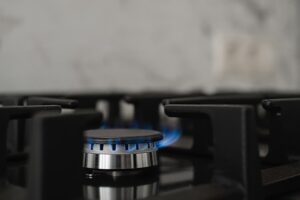The decision to export gas from the east coast through the Gladstone LNG terminal in 2015 has driven up prices to the point where it is destroying demand for the fossil fuel and won’t be fixed with new supply, a new analysis suggests.
The analysis, performed by the Institute of Energy Economics and Financial Analysis (IEEFA), suggests that contrary to claims by fossil fuel producers, bringing on new supply will do nothing to alleviate high gas prices along the east coast.
It found the decision to export Australian gas through the LNG Gladstone export terminal in 2015 tied households, manufacturing and electricity generators to global markets for the fuel, substantially driving up prices that in turn triggered a massive fall in demand.
According to the report, gas demand enjoyed four decades of sustained growth on the east coast but over the last decade this has fallen by nearly a third – 32% – as households, manufacturers and electricity generations look elsewhere. Worse, last financial year demand hit a 25-year low.
The report found demand among manufacturers dropped 24% over the last decade as local petroleum refineries and chemical plants closed due to the combination of high prices and tough economic conditions.

Over the same period gas demand in the National Electricity Market (NEM) has fallen by nearly two thirds – 60% – over the same period as renewable energy generation has come online. The share of renewable energy generation has jumped from 10.4% to 38.1% of the grid when the share of gas has collapsed from 11.5% to 5%.
Gas finance analyst Kevin Morrison, a co-author on the report, said the changes to gas prices on the east coast were structural, with the industry entering a period of “demand destruction”.

“The only area of growing gas demand is the gas industry itself which it wants for export. That’s the only area where there’s increased demand,” Morrison said. “What it’s done, because of the international linkage in prices, it’s destroyed demand elsewhere.”
“It’s gas eating gas.”
Morrison said that it was too early to tell what effect policies like Victoria’s plan to phase out gas in the home would have on the market. Victoria represents about two-thirds of Australia’s household gas demand and has so far led the decline.
With the combination of high prices and electrification, Morrison said it was unlikely customers would return.

These dynamics have developed despite gas production on the east coast rising from 1,930 terajoules a day in January 2015 to 5,490T terajoules a day in June 2024
“Virtually every day we’re hearing from energy producers that we need more gas, we need more gas,” Morrison said. “People seem to think the only way to approach the issue is that we need more energy supply to fix it. It’s not. More gas won’t fix it.
“We’ve seen the biggest rise in gas production and gas supply in eastern Australia ever, but the prices have tripled. You’ve had new gas supply, but it does not lower prices.”
The report comes as the Victorian state government announced its Economic Growth Statement on Tuesday. Central to the plan was a fast-tracked approvals process for new gas projects and efforts to “cut red tape”.
The plan was welcomed by the Australian Energy Producers, Australia’s oldest and longest running oil and gas industry association, who described the move as “a step in the right direction” after “more than a decade of demonising gas and driving away investment.”










